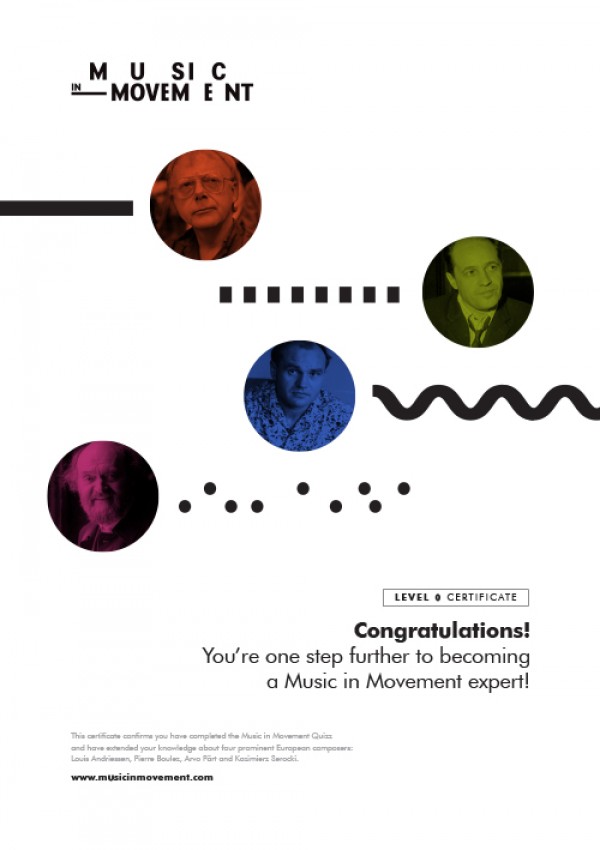MiM quiz – Explorer level / Education
Remember, this quiz is not about testing your knowledge about contemporary music. It's all about getting to know the four composers - their music, techniques, but also inspirations and private stories. We invite you to take on this challenge - discover the universe of four personalities and dive in into their music.
Which of the composers is associated with the concept of tintinnabuli?
Arvo Pärt invented his personal musical language in 1976 after discarding all modernist tools and studing early polyphony and Gregorian chant for many years. He named it tintinnabuli – from Latin tintinnabulum meaning ’little bell’.
Read more about tintinnabuli.
To which one of the four composers can the following quotes be attributed:
Not all of the quotations can be found on the MiM website, but the personalities and interests of the Composers clearly suggest the right answers.
Answer: Pierre Boulez
Not all of the quotations can be found on the MiM website, but the personalities and interests of the Composers clearly suggest the right answers.
Answer: Louis Andriessen
Not all of the quotations can be found on the MiM website, but the personalities and interests of the Composers clearly suggest the right answers
Answer: Kazimierz Serocki
Not all of the quotations can be found on the MiM website, but the personalities and interests of the Composers clearly suggest the right answers.
Answer: Arvo Pärt
Orchestral music - who composed this musical piece?
Listen to the short excerpt and recognize the composer.
Instrumental color scheme also plays a major role in Pli selon pli composed by Pierre Boulez, but this piece sounds quite different from Serocki’s music. Boulez saw the precise pitch as equally important as harmony arrangements.
In Ad libitum the nature of the music resembles that of colour fantasia, like in many of Krzysztof Serocki’s works.
A vivid, though by no means simple rhythm, sound of the orchestra favouring the brass rather than the strings suggest Louis Andriessen – the example is taken from his Mysterien.
Consonant chords, melody and harmony bringing to mind Renaissance music in Arvo Pärt’s 3. Symphony are characteristics of many of his works.
Vocal music - who composed this musical piece?
Listen to the short excerpt and recognize the composer.
The example comes from Pierre Boulez – Pli selon pli.
The example comes from Louis Andriessen La passione.
The example comes from Arvo Pärt – Kanon pokajanen.
The example comes from Kazimierz Serocki Poesies.
The music of the four composers is usually heard in traditional concert halls, yet each of them felt the need to go beyond the typical limitations of such venues, and three of them wrote pieces intended to be performed in other, more appropriate spac
Kazimierz Serocki saw the need to use new spaces for new music, but this was not reflected in his work. Apart from the suggestion that Arrangements can be performed simultaneously in different parts of the same building.
Religious buildings are natural venues for Arvo Pärt’s music.
Louis Andriessen put his understanding of the political role of music into practice with e.g. the Volharding ensemble, with which he gave street performances.
Pierre Boulez believed that new music required new spaces and to make his visions a reality he collaborated with well-known architects.
Chamber music - which of the four composers wrote this musical piece?
Listen to the short exceprt and recognise the composer.
The example comes from Louis Andriessen Zilver.
The example comes from Kazimierz Serocki Swinging Music.
The example comes from Arvo Pärt – Es sang vor langen Jahren.
The example comes from Pierre Boulez – Le marteau sans maître.
Well done!
We hope you enjoyed the experience!
You can now share & save your MiM certificate!

